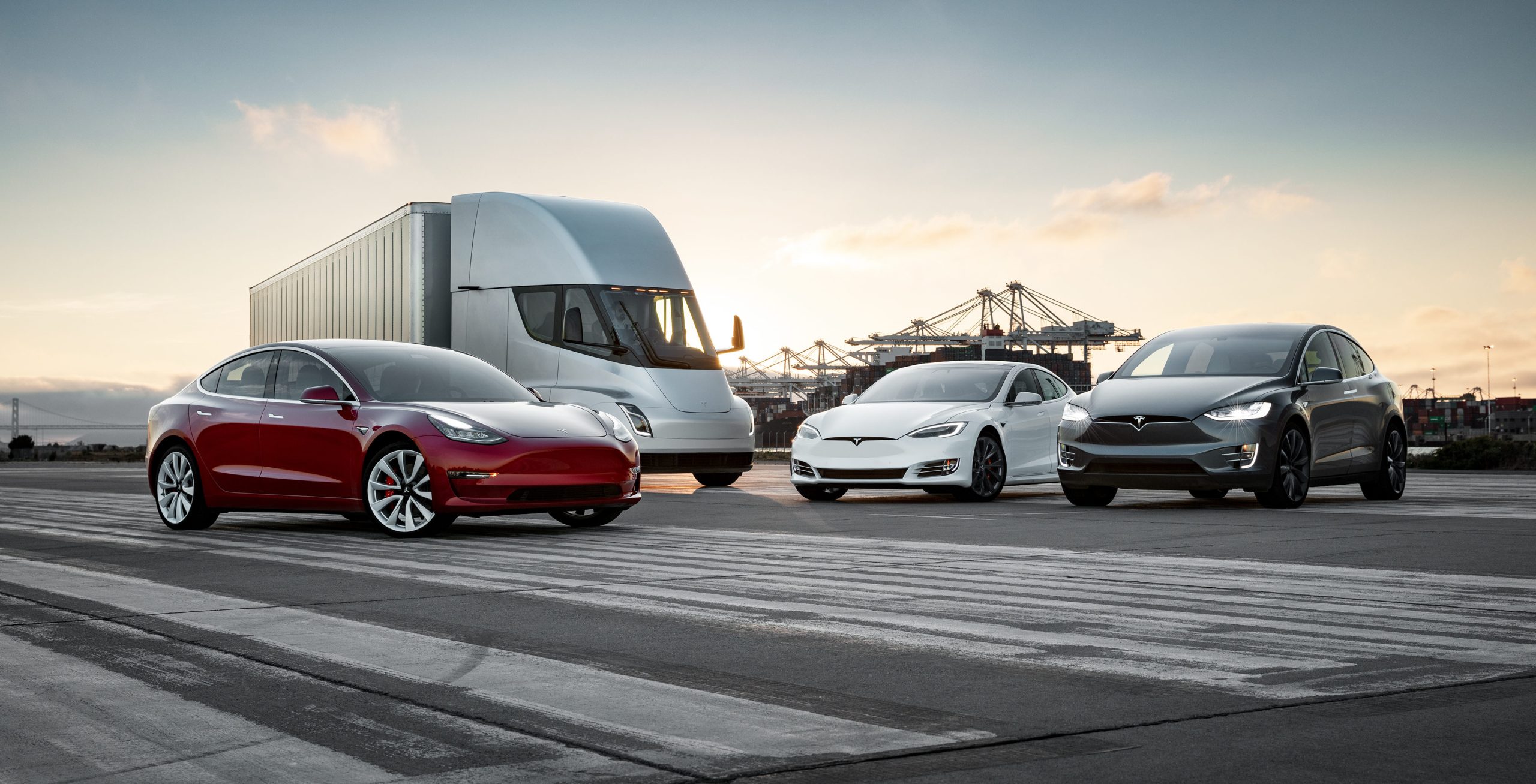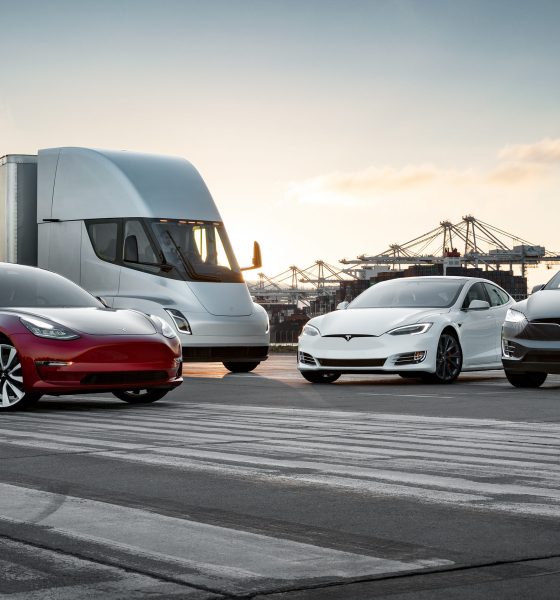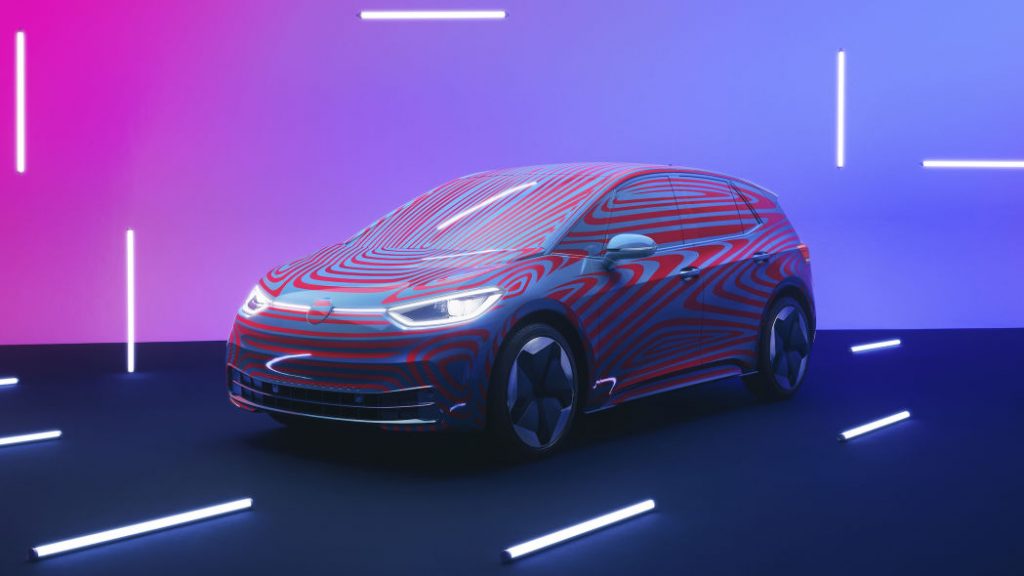

Energy
The Tesla Effect is reaching critical mass, and it could put Big Oil on the defensive
Headed by vehicles like the Tesla Model 3, the electric car revolution is showing no signs of stopping. The auto landscape today is very different from what it was years ago. Before, only Tesla and a few automakers were pushing electric cars, and the Model S was proving to the industry that EVs could be objectively better than internal combustion vehicles. Today, practically every automaker has plans to release electric cars. EV startup Bollinger Motors CEO Robert Bollinger summed it up best: “If you want to start a (car company) now, it has to be electric.”
Catalysts for a transition
A critical difference between then and now is that veteran automakers today are coming up with decent electric vehicles. No longer were EVs glorified golf carts and compliance cars; today’s electric vehicles are just as attractive, sleek, and powerful than their internal combustion peers. The auto industry has warmed up to electric vehicles as well. The Jaguar I-PACE has been collecting awards left and right since its release, and more recently, the Kia Niro EV was dubbed by Popular Mechanics as the recipient of its Car of the Year award.
A survey by CarGurus earlier this year revealed that 34% of car buyers are open to purchasing an electric car within the next ten years. A survey among young people in the UK last year revealed even more encouraging results, with 50% of respondents stating that they want electric cars. Amidst the disruption being brought about by the Tesla Model 3, which has all but dominated EV sales since production ramped last year, experienced automakers have responded in kind. Volkswagen recently debuted the ID.3, Audi has the e-tron, Hyundai has the Kona EV, and Mercedes-Benz has the EQC. Even Porsche, a low-volume car manufacturer, is attracting the high-end legacy market with the Taycan.
At this point, it appears that Tesla’s mission is going well underway. With the market now open to the idea of electric vehicles, there is an excellent chance that EV adoption will only increase from this point on.

Big oil feels a change in the wind
Passenger cars are the No.1 source of demand for oil, and with the potential emergence of a transportation industry whose life and death does not rely on a gas pump, Big Oil could soon find itself on the defensive. Depending on how quickly the auto industry could shift entirely to sustainable transportation and how seriously governments handle issues like climate change, “peak oil” could happen a couple of decades or a few years from now. This could adversely affect investors in the oil industry, who might be at risk of losing their investments if peak oil happens faster than expected. JJ Kinahan, chief market strategist at TD Ameritrade, described this potential scenario in a statement to CNN. “Look at what happened to the coal industry. You have to keep that in the back of your mind and be vigilant. It can turn very, very quickly,” the strategist said.
Paul Sankey of Mizuho Securities previously mentioned that a “Tesla Effect” is starting to be felt in the oil markets. According to the analyst, the Tesla Effect is an increasingly prevalent concept today which states that while the 20th century was driven by oil, the 21st century will be driven by electricity. This, together with the growing movements against climate change today, does not bode well for the oil industry. Adam White, an equity strategist at SunTrust Advisory, stated that investors might not be looking at the oil market with optimism anymore. “A lot of damage has already been done. People are jaded towards the industry,” he said.

An analysis from Barclays points to the world’s reliance on oil peaking somewhere between 2030 and 2035, provided that countries keep to their low-carbon goals. The investment bank also noted that peak oil could happen as early as 2025 if more aggressive climate change initiatives are adopted on a wider scale. This all but makes investments in oil stocks very risky in the 2020s, and this risk gets amplified if electric vehicles become more mainstream. Sverre Alvik of research firm DNV GL described this concern. “By 2030, oil shareholders will feel the impact. Electric vehicles are likely to cause light vehicle oil demand to plunge by nearly 50% by 2040,” Alvik said.
Some of today’s prolific oil producers appear to be making the necessary preparations for peak oil’s inevitable decline. Amidst pressures from shareholders, BP, Royal Dutch Shell, and Total have expanded their operations into solar, wind, and electric charging, seemingly as a means to future-proof themselves. On the flipside, there are also big oil players that are ramping their activities. Earlier this month, financial titan Warren Buffet, who recently expressed his skepticism towards Elon Musk’s plan of introducing an insurance service for Tesla’s electric cars, committed $10 billion to Occidental Petroleum, one of the largest oil and gas exploration companies in the United States.
A Point of No Return
The auto industry is now at a point where a real transition towards electrification is happening. Tesla’s efforts over the years, from the original Roadster to the Model 3, have played a huge part in this transition. Tesla, as well as its CEO, Elon Musk, have awakened the public’s eye about the viability of electric cars, while showing the auto industry that there is a demand for good, well-designed EVs. Nevertheless, Tesla still has a long journey ahead of it, as the company ramps its activities in the energy storage sector. If Tesla Energy mobilizes and becomes as disruptive as the company’s electric car division, it would deal yet another blow to the oil industry.
At this point, it is pertinent for veteran automakers that have released their own electric cars to ensure that they do not stop. Legacy carmakers had long talked the talk when it came to electric vehicles, but today, it is time to walk the walk. German automaker Volkswagen could be a big player in this transition, as hinted at by the reception of its all-electric car, the ID.3. The ID.3 launch was successful, with Volkswagen getting 10,000 preorders for the vehicle in just 24 hours. The German carmaker should see this as writing on the wall: the demand for EVs is there.

The Volkswagen ID.3 is not as quick or sleek as a Tesla Model 3, nor does it last as long on the road between charges. But considering its price point and its badge, it does not have to be. Volkswagen states that the ID.3 will be priced below 40,000 euros ($45,000) in Germany, which should make it attainable for car buyers in the country. If done right, the ID.3 could be the second coming of the Beetle, ultimately becoming a car that redeems the company from the stigma of the Dieselgate scandal. Thus, it would be a great shame if Volkswagen drops the ball on the ID.3.
Tesla will likely remain a divisive company for years to come; Elon Musk, even more so. Nevertheless, Tesla and what it stands for is slowly becoming an idea, one that connotes hope for something better and cleaner for the future. And if history’s victories and tragedies are any indication, once something becomes an idea, an intangible concept, it becomes impossible to kill.

Cybertruck
Tesla updates Cybertruck owners about key Powershare feature

Tesla is updating Cybertruck owners on its timeline of a massive feature that has yet to ship: Powershare with Powerwall.
Powershare is a bidirectional charging feature exclusive to Cybertruck, which allows the vehicle’s battery to act as a portable power source for homes, appliances, tools, other EVs, and more. It was announced in late 2023 as part of Tesla’s push into vehicle-to-everything energy sharing, and acting as a giant portable charger is the main advantage, as it can provide backup power during outages.
Cybertruck’s Powershare system supports both vehicle-to-load (V2L) and vehicle-to-home (V2H), making it flexible and well-rounded for a variety of applications.
However, even though the feature was promised with Cybertruck, it has yet to be shipped to vehicles. Tesla communicated with owners through email recently regarding Powershare with Powerwall, which essentially has the pickup act as an extended battery.
Powerwall discharge would be prioritized before tapping into the truck’s larger pack.
However, Tesla is still working on getting the feature out to owners, an email said:
“We’re writing to let you know that the Powershare with Powerwall feature is still in development and is now scheduled for release in mid-2026.
This new release date gives us additional time to design and test this feature, ensuring its ability to communicate and optimize energy sharing between your vehicle and many configurations and generations of Powerwall. We are also using this time to develop additional Powershare features that will help us continue to accelerate the world’s transition to sustainable energy.”
Owners have expressed some real disappointment in Tesla’s continuous delays in releasing the feature, as it was expected to be released by late 2024, but now has been pushed back several times to mid-2026, according to the email.
Foundation Series Cybertruck buyers paid extra, expecting the feature to be rolled out with their vehicle upon pickup.
Cybertruck’s Lead Engineer, Wes Morrill, even commented on the holdup:
As a Cybertruck owner who also has Powerwall, I empathize with the disappointed comments.
To their credit, the team has delivered powershare functionality to Cybertruck customers who otherwise have no backup with development of the powershare gateway. As well as those with solar…
— Wes (@wmorrill3) December 12, 2025
He said that “it turned out to be much harder than anticipated to make powershare work seamlessly with existing Powerwalls through existing wall connectors. Two grid-forming devices need to negotiate who will form and who will follow, depending on the state of charge of each, and they need to do this without a network and through multiple generations of hardware, and test and validate this process through rigorous certifications to ensure grid safety.”
It’s nice to see the transparency, but it is justified for some Cybertruck owners to feel like they’ve been bait-and-switched.
Energy
Tesla starts hiring efforts for Texas Megafactory
Tesla’s Brookshire site is expected to produce 10,000 Megapacks annually, equal to 40 gigawatt hours of energy storage.

Tesla has officially begun hiring for its new $200 million Megafactory in Brookshire, Texas, a manufacturing hub expected to employ 1,500 people by 2028. The facility, which will build Tesla’s grid-scale Megapack batteries, is part of the company’s growing energy storage footprint.
Tesla’s hiring efforts for the Texas Megafactory are hinted at by the job openings currently active on the company’s Careers website.
Tesla’s Texas Megafactory
Tesla’s Brookshire site is expected to produce 10,000 Megapacks annually, equal to 40 gigawatt hours of energy storage, similar to the Lathrop Megafactory in California. Tesla’s Careers website currently lists over 30 job openings for the site, from engineers, welders, and project managers. Each of the openings is listed for Brookshire, Texas.
The company has leased two buildings in Empire West Business Park, with over $194 million in combined property and equipment investment. Tesla’s agreement with Waller County includes a 60% property tax abatement, contingent on meeting employment benchmarks: 375 jobs by 2026, 750 by 2027, and 1,500 by 2028, as noted in a report from the Houston Business Journal. Tesla is required to employ at least 1,500 workers in the facility through the rest of the 10-year abatement period.
Tesla’s clean energy boom
City officials have stated that Tesla’s arrival marks a turning point for the Texas city, as it highlights a shift from logistics to advanced clean energy manufacturing. Ramiro Bautista from Brookshire’s economic development office, highlighted this in a comment to the Journal.
“(Tesla) has great-paying jobs. Not just that, but the advanced manufacturing (and) clean energy is coming to the area,” he said. “So it’s not just your normal logistics manufacturing. This is advanced manufacturing coming to this area, and this brings a different type of job and investment into the local economy.”
Energy
Tesla and Samsung SDI in talks over new US battery storage deal: report
The update was related by industry sources and initially reported by South Korean news outlets.

Recent reports have suggested that Tesla and Samsung SDI are in talks over a potential partnership to supply batteries for large-scale energy storage systems (ESS).
The update was related by industry sources and initially reported by South Korean news outlets.
ESS batteries to be built at Samsung’s Indiana plant
As noted in a report from Korea JoongAng Daily, the demand for energy storage systems has been growing rapidly in North America, thanks in no small part to the surge in AI investments across numerous companies. With this in mind, Tesla has reportedly approached Samsung SDI about a potential battery supply deal.
The deal is reportedly worth over 3 trillion Korean won (approximately $2.11 billion) and will span three years, according to The Korea Global Economic Daily. A battery supply deal with Samsung SDI could make sense for Tesla as the company already has a grid-scale battery, the Megapack, which is perfect for industrial use. Samsung SDI could simply supply cells for the EV maker.
Production of the batteries would reportedly take place at Samsung SDI’s joint venture factory with Stellantis in Indiana, which is currently under construction. Samsung SDI recently announced plans to use part of that plant’s EV lines to produce cells for ESS, with a targeted capacity of 30 GWh by the end of next year.
Tesla and Samsung’s partnership
At present, only a handful of manufacturers, including Korea’s LG Energy Solution, Samsung SDI, SK On, and Japan’s Panasonic, are capable of producing energy storage-scale batteries domestically in the United States. A Samsung SDI official issued a comment about the matter, stating, “Nothing has been finalized regarding cooperation with Tesla.”
The possible energy storage system deal adds another layer to Tesla’s growing collaboration with Samsung, which is already in line as a partner in the upcoming production of Tesla’s AI5 and AI6 chips. Early sample manufacturing of the AI6 is expected to begin in South Korea, with mass production slated for Samsung’s Texas-based Taylor foundry when it starts operations.
The AI6 chip will power Tesla’s next wave of high-volume projects, including the Optimus humanoid robot and the autonomous Cybercab service. Musk has called the partnership with Samsung a “real collaboration,” adding that he personally plans to “walk the line” at the Taylor facility to speed up progress.








